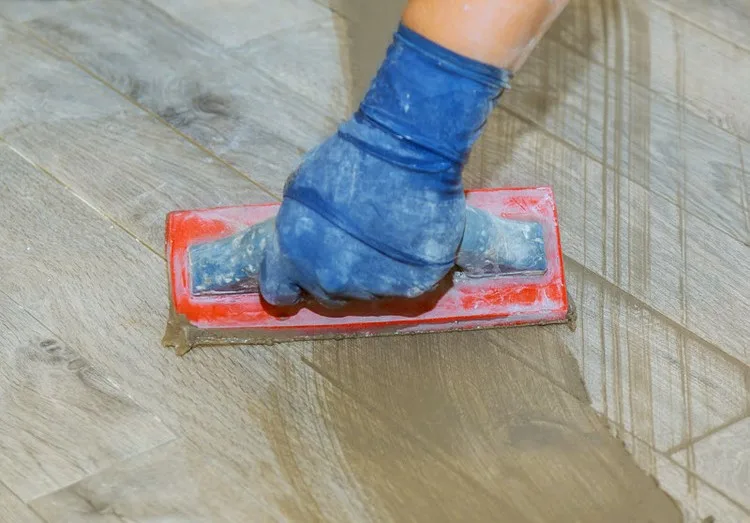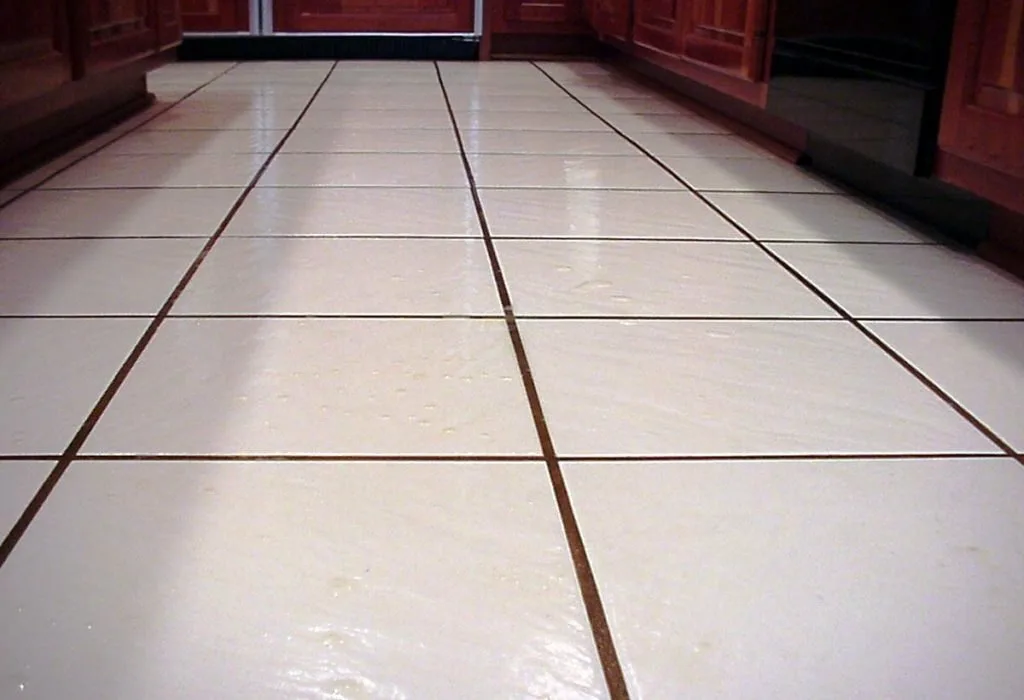Acrylic grout is a water-based grout made from a mix of latex with an acrylic additive. This versatile material is known for its durability and flexibility, making it suitable for various tiling applications. It provides effective resistance against stains, water damage, and mold, ensuring the longevity of tiled surfaces. It is available in a range of colours, allowing for creative and customizable design options in tiling projects.
How is it different from traditional grouts?
Acrylic grout distinguishes itself from traditional grout through its water-based composition containing acrylic resin. Its superior adhesion properties and ease of application make it a versatile choice suitable for both interior and exterior applications. The acrylic grout’s smooth consistency facilitates straightforward installation, reducing the likelihood of cracking and shrinking.
Acrylic grout uses
Acrylic grout is used across residential, commercial and industrial applications.
Residential:
- Bathrooms
- Kitchens
- Floors
- Living Rooms
- Bedrooms
- Backsplashes etc
Commercial:
- Offices
- Showrooms
- Lobbies
- Restaurants
- Retail Stores
- Hotels etc
Industrial
- Factories
- Warehouses
- Laboratories
- Workshops
- Manufacturing Plants
- Storage Areas etc.
Advantages of Acrylic grout
- Adapts to structural movement, preventing cracks.
- Resists stains, water damage, and mold for long-lasting tiles.
- Dries faster, allowing for a quicker completion of the tiling project.
- Smooth consistency for straightforward installation.
- Suitable indoors and outdoors for various projects.
- Available in diverse colors for creative design options.
- Speeds up tile installation with its rapid drying time.
- Minimal upkeep required, ensuring easy care for tiled surfaces.
- Effectively protects against stains, preserving the aesthetic quality.
- Strong adhesion creates a secure bond between tiles.
- Water-based composition reduces environmental impact.
- Yields a smooth finish, enhancing the overall appearance.
- Ideal for use in wet areas as it helps prevent water penetration.
Types of Acrylic grouts
1. Unsanded Acrylic Grout:
Unsanded acrylic grout, characterised by its smooth texture, is favoured for projects with thinner grout lines, often seen in mosaic or small-format tile installations. The absence of sand particles not only contributes to a refined finish but also makes it suitable for use with polished or delicate tiles, minimising the risk of surface scratching. Commonly employed in kitchens, bathrooms, and backsplashes, unsanded acrylic grout provides a seamless, visually pleasing appearance, particularly in areas where a more delicate touch is desired.

2. Premixed Acrylic Grout:
Premixed acrylic grout comes ready to use packs, streamlining the tiling process and eliminating the need for on-site mixing. This convenience makes it an ideal choice for smaller projects or for those seeking a straightforward application. The pre-blended formulation ensures consistency in color and texture, offering a hassle-free solution for DIY enthusiasts and professionals alike. Used in various residential applications such as kitchen backsplashes and bathroom renovations, premixed acrylic grout simplifies the tiling experience, saving time and effort during installation.

3. Epoxy-Acrylic Hybrid Grout:
The epoxy-acrylic hybrid grout seamlessly combines the flexibility of acrylic with the durability of epoxy. This results in a grout that not only withstands stains, chemicals, and water but also offers ease of application. Well-suited for demanding environments like commercial kitchens, where spills and frequent cleaning are routine, this hybrid grout provides a resilient solution without compromising on practicality. Its ability to resist harsh substances makes it a reliable choice for areas where maintaining a pristine appearance is essential.

4. Stain-Resistant Acrylic Grout:
Stain-resistant acrylic grout is tailored to resist common household stains, making it an ideal choice for areas prone to spills and discoloration. Whether applied to kitchen floors, countertops, or backsplashes, this grout type aids in preserving the appearance of tiled surfaces over time. Its easy-to-clean nature and resistance to discoloration contribute to a long-lasting and aesthetically pleasing finish in residential and commercial spaces alike, offering both practicality and durability.

5. Coloured Acrylic Grout:
Coloured acrylic grout stands out for its versatility, offering a spectrum of colour options for customised designs. Whether aiming for a cohesive blend or a contrasting statement, this grout type allows for creative expression in both residential and commercial applications. The ability to match or complement tile colours enhances the overall aesthetic appeal of tiled surfaces, making coloured acrylic grout a popular choice for projects where design plays a crucial role in achieving the desired visual impact.

6. Rapid-Setting Acrylic Grout:
Rapid-setting acrylic grout is engineered to expedite the drying process, reducing the overall project timeline significantly. This feature is particularly advantageous in scenarios where a quick turnaround is essential, such as commercial settings or areas with limited downtime. Used in fast-paced construction projects or renovations, rapid-setting acrylic grout ensures efficient grout curing, allowing for faster access to tiled surfaces and facilitating a more time-effective installation process.

7. Anti-Microbial Acrylic Grout:
Anti-microbial acrylic grout incorporates specialised additives to inhibit the growth of mold, mildew, and bacteria. This makes it an optimal choice for spaces prioritising cleanliness and hygiene, such as bathrooms and healthcare facilities. Beyond providing a durable and visually appealing finish, anti-microbial acrylic grout contributes to a healthier living or working environment by preventing the development of harmful microorganisms. Its added layer of protection against potential health hazards makes it a preferred option for projects where sanitation is of utmost importance.

8. Caulk Acrylic Grout:
Caulk acrylic grout is specifically formulated for use in joints, corners, and other areas that require flexibility and waterproofing. It serves as a versatile sealant, preventing water penetration and offering excellent adhesion in spaces prone to movement. This type of acrylic grout is ideal for sealing gaps around fixtures, such as sinks and bathtubs, as well as expansion joints in tiled surfaces. Its flexible nature accommodates structural shifts, reducing the risk of cracks or separation. Additionally, caulk acrylic grout is often easy to apply and provides a neat, finished appearance, making it a practical choice for both functional and aesthetic purposes in tiling projects.

Acrylic Grout Application Method
1. Surface Preparation:
- Ensure the tile surfaces are clean, dry, and free from dust or debris before starting the grouting process.
2. Mixing:
- Follow the manufacturer’s instructions for mixing acrylic grout. Achieve a smooth, lump-free consistency by using the recommended water-to-grout ratio.
3. Application:
- Apply the mixed acrylic grout onto the tile surface using a rubber float. Hold the float at a 45-degree angle to press the grout into the spaces between tiles.
4. Work in Sections:
- Divide the area into manageable sections to prevent the grout from drying too quickly. This ensures you have sufficient time to wipe away excess grout.
5. Float and Press:
- Use the rubber float to press the grout into the spaces, ensuring full coverage and eliminating air pockets for a uniform finish.
6. Wipe Excess Grout:
- After 15-30 minutes (or as per manufacturer recommendations), , use a damp sponge to gently wipe away excess grout from the tile surfaces. Rinse the sponge frequently.
7. Caulk Tube (Optional):
- For edges and corners, use an acrylic grout caulk tube for precise application. Apply the caulk evenly along these areas to achieve clean lines.
8. Drying Period:
- Allow the grout to dry for the specified time according to the manufacturer’s instructions. This typically ranges from 24 to 72 hours.
9. Sealing (If Required):
- If recommended by the manufacturer, apply a sealer to the grout lines to enhance water resistance and protect against stains. Follow the specific instructions for the chosen sealer.
10. Final Cleaning:
- Once the grout is fully cured, perform a final cleaning to remove any remaining haze or residue on the tiles. Use a damp cloth or sponge for this step.
11. Inspect and Touch Up:
- Inspect the grouted areas for any missed spots or inconsistencies. Touch up as needed before the grout fully sets.
12. Finished Surface:
- Once the grout is completely dry and cured, revel in the finished and durable tiled surface.
Conclusion
Acrylic grout proves to be a versatile and durable option for various tiling projects. Its resistance to stains, mold, and water damage makes it an ideal choice for both interior and exterior applications. Additionally, the ease of application and maintenance contributes to its popularity among homeowners and contractors alike. Its ;long-term benefits and aesthetic appeal make acrylic grout a compelling investment for those seeking a reliable and aesthetically pleasing tiled surface.

